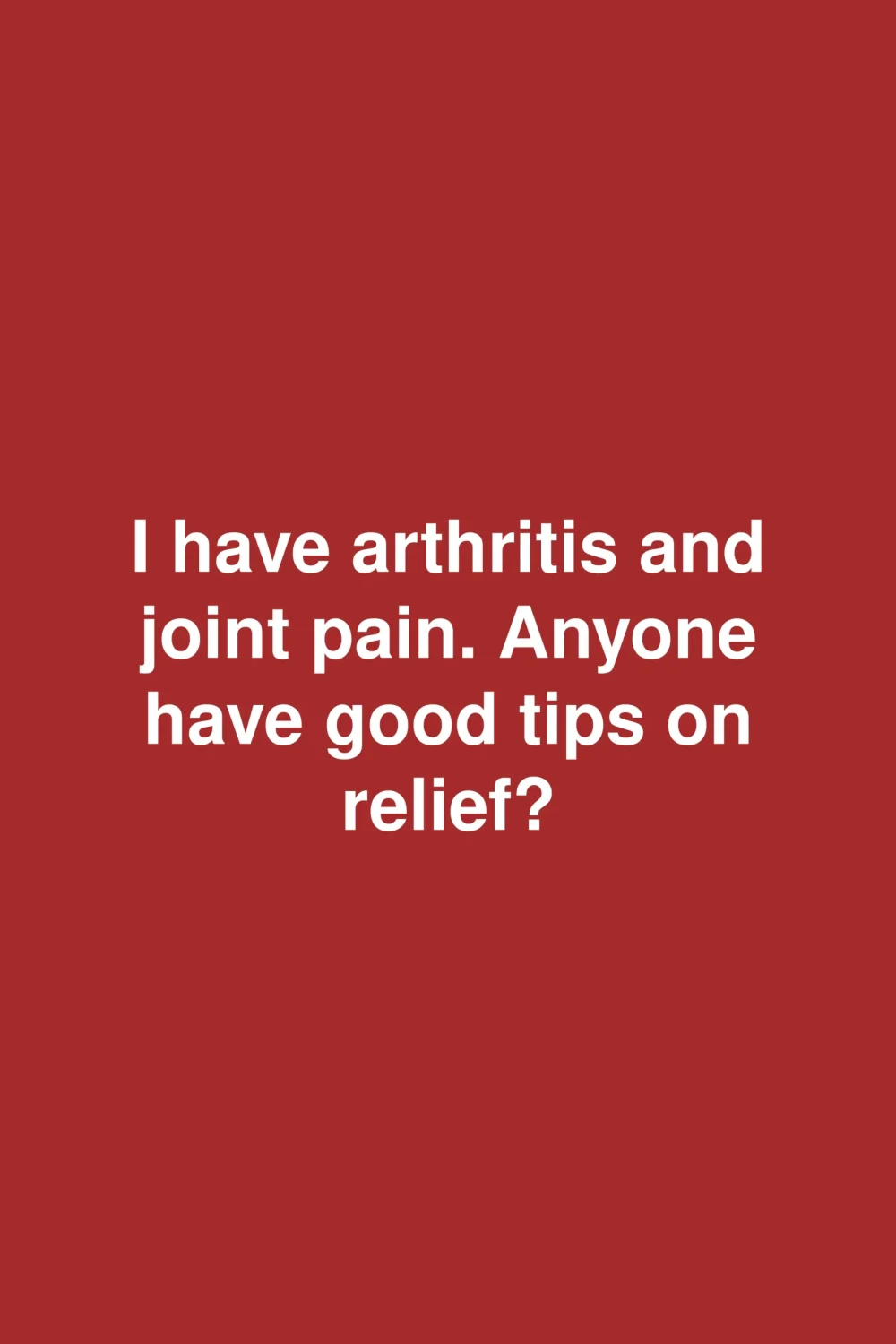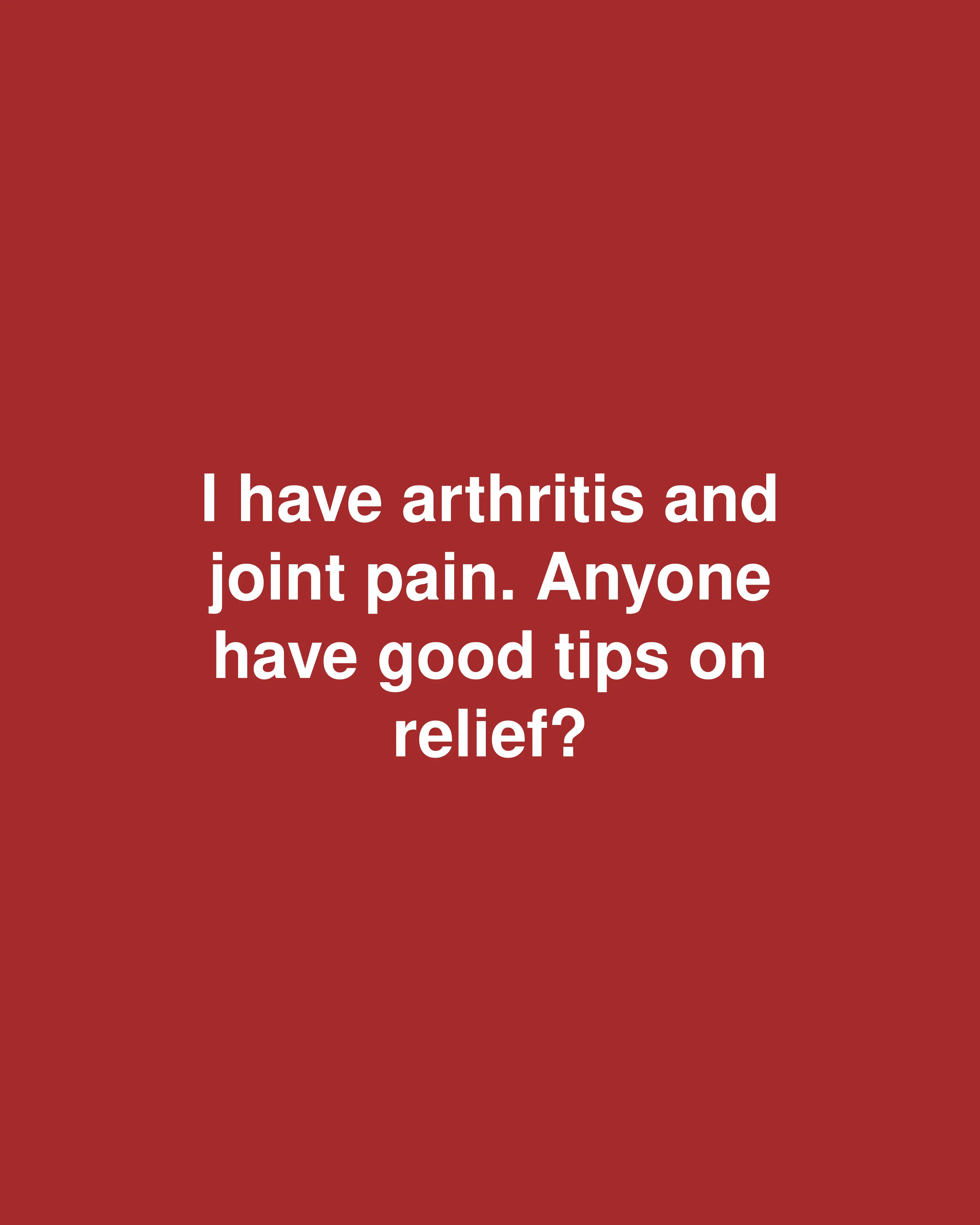Want to save this recipe?
Enter your email below and we’ll send the recipe straight to your inbox!
Living Well with Arthritis: Your Complete Guide to Joint Pain Relief
Have you ever struggled to open a jar or climb stairs because of painful, stiff joints? You’re not alone. Millions worldwide face the daily challenges of arthritis and joint pain, conditions that can transform simple tasks into frustrating hurdles. Whether you’re recently diagnosed or have been managing joint pain for years, finding effective relief strategies can significantly improve your quality of life.
Understanding Arthritis: More Than Just “Wear and Tear”
Arthritis isn’t a single condition but rather an umbrella term covering over 100 different joint diseases. While osteoarthritis (the “wear and tear” variety) and rheumatoid arthritis (an autoimmune condition) are the most common, each type has unique characteristics and management approaches.
The causes range widely—age-related degeneration, genetics, previous injuries, infections, and even metabolic issues like gout can trigger joint problems. That persistent morning stiffness, swelling, reduced range of motion, and pain are your body’s signals that something needs attention.
Lifestyle Modifications: Your First Line of Defense
Maintain a Healthy Weight
Carrying extra pounds significantly increases pressure on your joints, especially weight-bearing ones like knees and hips. In fact, each pound of excess weight adds about four pounds of pressure on your knees when walking! Even modest weight loss—just 10 pounds—can reduce joint pain and improve mobility considerably.
Move More, Hurt Less
It might seem counterintuitive when you’re in pain, but appropriate exercise is one of the most effective treatments for arthritis. Regular physical activity strengthens the muscles supporting your joints, improves flexibility, and releases endorphins—your body’s natural painkillers.
Try these joint-friendly activities:
- Water exercises: Swimming and water aerobics provide resistance without impact.
- Walking: Start with short distances on level surfaces and gradually increase.
- Cycling: Whether outdoors or on a stationary bike, cycling builds leg strength with minimal joint stress.
- Gentle yoga or tai chi: These improve balance, flexibility, and body awareness while reducing stress.
Remember to start slowly and listen to your body. A good rule of thumb: if pain lasts more than two hours after activity, reduce the intensity next time.
The Anti-Inflammatory Diet
Your kitchen can be a powerful pharmacy for joint health. Focus on these inflammation-fighting foods:
- Fatty fish (salmon, mackerel, sardines) rich in omega-3 fatty acids
- Colorful fruits and vegetables packed with antioxidants
- Nuts and seeds containing healthy fats and minerals
- Olive oil with its natural anti-inflammatory compounds
- Turmeric and ginger which have potent anti-inflammatory properties
Just as important is what to avoid: processed foods, refined sugars, excessive red meat, and alcohol can trigger inflammation and worsen symptoms.
Medical Approaches to Pain Management
Over-the-Counter Options
For occasional pain flares, over-the-counter medications like acetaminophen (Tylenol) can help manage pain without affecting inflammation. Nonsteroidal anti-inflammatory drugs (NSAIDs) such as ibuprofen (Advil) and naproxen (Aleve) address both pain and inflammation but should be used carefully, especially if you have stomach, kidney, or heart concerns.
Prescription Treatments
For more severe symptoms, your doctor might recommend:
- Prescription-strength NSAIDs
- Corticosteroids to quickly reduce inflammation
- Disease-modifying antirheumatic drugs (DMARDs) for conditions like rheumatoid arthritis
- Biologic response modifiers that target specific parts of the immune system
Always discuss medication options thoroughly with your healthcare provider, focusing on potential side effects and interactions with other medications.
Alternative Approaches Worth Exploring
Many people find significant relief through complementary therapies:
- Acupuncture: Fine needles inserted at specific points may help reduce pain signals.
- Massage therapy: Regular sessions can improve circulation and reduce muscle tension around painful joints.
- Heat and cold therapy: A warm shower or heating pad can ease morning stiffness, while ice packs can reduce inflammation after activity.
- Supplements: Some people report benefits from glucosamine, chondroitin, omega-3 fatty acids, or turmeric supplements, though scientific evidence varies.
Common Mistakes to Avoid
Mistake #1: The All-or-Nothing Approach
Many people either completely avoid activity (fearing pain) or push through excessive pain (thinking it’s necessary). Both extremes can be harmful. Instead, find your middle ground with appropriate, joint-friendly activities and proper pacing.
Mistake #2: Relying Solely on Medications
While medications can be valuable tools, they work best as part of a comprehensive approach including exercise, weight management, and proper joint protection techniques.
Mistake #3: Ignoring Emotional Well-being
Chronic pain often brings frustration, anxiety, and even depression. Addressing your mental health through stress management techniques, support groups, or professional counseling is an essential part of arthritis management.
Making Daily Life Easier
Small adjustments can make a big difference in your daily comfort:
- Use ergonomic tools with larger grips for cooking and gardening
- Install grab bars in bathrooms and lever-style door handles
- Consider slip-on shoes to avoid bending
- Plan activities with rest periods in between
- Use a backpack instead of a shoulder bag to distribute weight evenly
- Organize your home to keep frequently used items within easy reach
When to Seek Professional Help
Contact your healthcare provider if you experience:
- Joint pain that persists for more than a few weeks
- Significant swelling, redness, or warmth around a joint
- Pain that wakes you from sleep
- Sudden inability to move a joint
- Symptoms that interfere with daily activities despite self-care
Early intervention often leads to better outcomes and can prevent further joint damage.
Quick Recap: Your Arthritis Relief Toolkit
Living well with arthritis requires a multifaceted approach:
- Stay active with joint-friendly exercises
- Maintain a healthy weight
- Eat an anti-inflammatory diet
- Use appropriate medications wisely
- Explore complementary therapies
- Make practical adaptations to your environment
- Address both physical and emotional aspects of pain
Remember that managing arthritis is a marathon, not a sprint. Be patient with yourself, celebrate small victories, and keep exploring what works best for your unique situation. With the right strategies, you can reduce pain, improve function, and reclaim many activities you enjoy.
Frequently Asked Questions
Is arthritis pain worse in cold weather?
Many people report increased joint pain during cold or damp weather. While research hasn’t definitively explained this connection, it may relate to barometric pressure changes affecting joint tissues or reduced activity levels in winter. Try warm clothing layers, heating pads, and maintaining indoor exercise routines during cold months.
Can glucosamine supplements really help?
Research on glucosamine is mixed. Some studies show modest benefits for osteoarthritis pain, particularly in the knee, while others show no significant effect compared to placebo. If you want to try it, most experts recommend giving it at least three months before deciding if it helps your symptoms.
Is cracking joints harmful for people with arthritis?
Occasional joint cracking isn’t typically harmful, but forcing joints to crack could potentially cause injury. If joint cracking is painful or accompanied by swelling, consult your healthcare provider. For those with existing arthritis, focus on gentle range-of-motion exercises rather than cracking or popping joints.
Can arthritis pain be completely eliminated?
While complete elimination of arthritis pain isn’t always possible, most people can achieve significant improvement with proper management. The goal is to find your personal balance of treatments that maximizes function and quality of life while minimizing pain and medication side effects.


